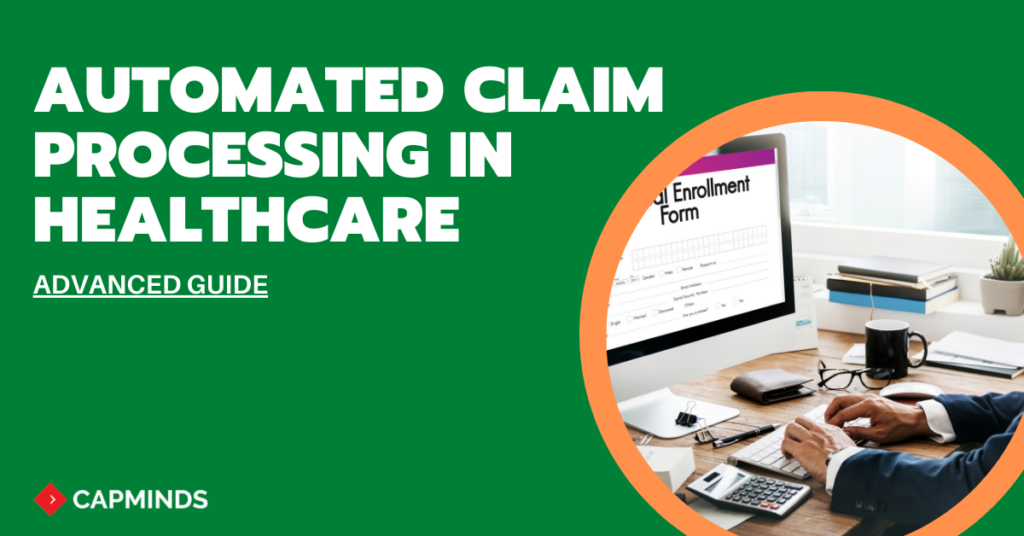Advanced Guide To Automated Claim Processing In Healthcare
With virtual health practices like telehealth are coming up, it is becoming more critical to manage bill payments and claims to process systematically. The medical billing cycle is a complex system consisting of processes, including medical records management, patient data management, etc.
Medical claim processing forms the foundation for healthcare insurance providers because when the process involves data management and commitment to customers. The medical claims process enables healthcare providers to receive payment for the care delivered. Medical claims solutions comprise ton of paperwork that can slow down the healthcare staff.
Many healthcare companies look for solutions to reduce the inaccuracy and inefficiency of manual processing of healthcare claims. However, this can be time-consuming and prone to errors. Errors in medical billing can cause severe consequences, and it can gravely affect ROI generation.
For all these reasons, medical claims automation software is required. Automated medical claims processing can streamline the entire billing cycle and minimize errors.
What is the automation of medical claims processing?
Medical claims processing automation uses technology for managing daily billing and claims management tasks. Medical claims processing automation speeds up the entire cycle and manages data with minimum errors.
Healthcare providers and health insurance organizations can utilize claim processing automation to streamline processes, such as medical claims, accounts payable, contract management, and patient onboarding. Claims processing in healthcare incorporates EHRs that can obtain and store health informatics as electronic records.
Healthcare claims management software automates all processes from data entry to handling and processing claims. In this way, automated medical claims processing fastens the billing cycle using the software. It offers several advantages; let’s take a look at them.
Advantages of automating medical claims processing
1. Cost reduction
Automated medical claims processing can reduce costs of operation costs and processing. Claim automation can speed things up and lower the chance of re-processing claims, contributing to reduced costs. Medical claims processing with claims processing software can enable healthcare providers to save a lot of money.
2. Minimizing errors
Health insurance claim management can ensure that the codes are accurate and claims are not missing any information. Manual errors are eliminated with automated medical claims processing. Data is handled and managed correctly with automated claims processing to identify gaps or missing information.
3. Faster claim processing
As the name sounds, medical claims processing automation automates all the steps involved in processing insurance claims. This means no looking for files, adding paperwork to the correct file, or manually entering data and codes. Insurance claims processing with claims processing software automates all these tasks and completes them much faster than with manual claim processing.
4. Reduced claim denials
Automated medical claims processing makes no errors in verifying patient information and matching data. Healthcare claims processing automation remains updated with the current billing policies. A major reason for claim denials is missing the deadline for filing claims.
Automated claims processing software makes sure that claims are filed on time and with the right codes and information. The overall practice management can be enhanced with automated claims processing systems.
5. Improved patient experience
Automated medical claims processing enables patients to make bill payments online or through applications. With automated healthcare claims management, patients can view and access details of their bills and receipts online, and this information can also be shared with health insurance claims management. Automated claims management in healthcare is useful while delivering integrated care or collaborative care, resulting in a better patient experience.
RELATED: MASTER YOUR CLAIM SUBMISSION PROCESS IN 7 EASY STEPS
How to automate healthcare claim processing?
Step 1: Integrate EHR/EMR
The first step of automating healthcare claims management is integrating information as electronic health records (EHRs). EHRs eliminate the need for paper-based medical claims and simplify data management. Claim management systems can access patients’ electronic health records and store all essential data online.
Electronic health records can make the medical systems operable online and simplify health analytics. EHRs promoted automated medical claims processing and provided an interoperable platform. Electronic data enables patient data sharing and increases patient engagement due to the easy access offered.
Step 2: Verify insurance information
If a patient’s information about health insurance is not valid, it is likely to result in claim denials. A claim processing system in healthcare can be automated to verify insurance information online without causing hassles. Healthcare claims processing systems need to include this feature for automated insurance verification to avoid claim denials.
Insurance claim management software can verify patient information through automated claim management solutions. This step can reduce delays by electronically confirming the patient’s coverage eligibility, and payment recovery can begin quickly. Automating a healthcare claims processing system can minimize the time lag due to inactive coverage leading to claim denials.
Step 3: Identify errors
Errors in claim processing can lead to delays and possible denials. An error may occur for various reasons, but it is essential to identify and rectify it immediately to prevent further delay. Healthcare automation with claim management software must identify errors that may happen while submitting claims.
Additionally, automated healthcare claims processing should suggest ways to rectify the errors. Medical claims management software can eliminate errors before claim submission with automatic rectification suggestions.
Step 4: Online claim management
Automation in claims processing systems can be implemented by incorporating online claim management. The claims can be created, verified, and submitted electronically by healthcare claims processing companies. Automated medical claims processing eliminates paperwork by making the entire system accessible online through electronic medical records and documents.
An insurance claims management system also complies with HIPAA regulations that guarantee security while accessing or exchanging electronic data. Online claim management makes it easier for providers and payers to track payments with cloud-based claim management software.
RELATED: HOW ELECTRONIC CLAIM SUBMISSION SPEED UP YOUR CLAIM PROCESS?
Step 5: Real-time updates on claim status
Medical devices and wearables are being introduced to offer real-time health monitoring for better population health management. Similarly, it is a great idea to achieve real-time access to current and previous insurance claims.
Automated medical claims processing makes this possible, reducing the need for manual processing. Medical claims can be adjudicated in real-time with automation, and automation in claims processing can provide regular updates and notifications on the claim status.
Final Thoughts
Automation in claims processing offers several advantages and is now a must-have for improving your healthcare practice management and increasing ROI returns. CapMinds can help you build the perfect automated claims management software to streamline your billing cycle and manage claims without errors.




